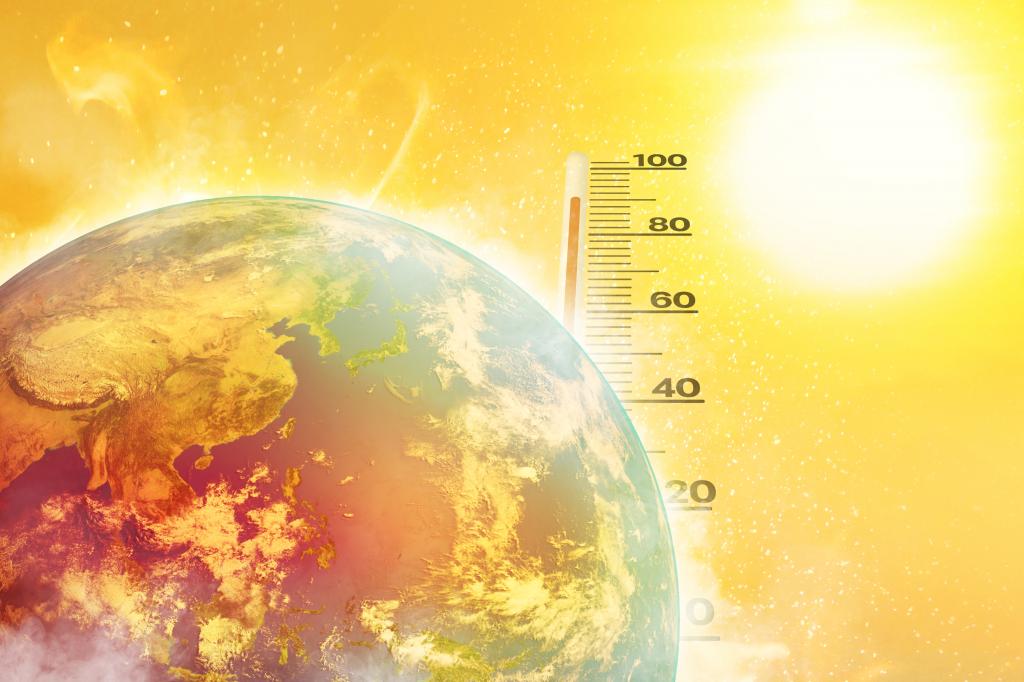

June-October 2023 surpassed the 1991-2020 average by 0.57℃



Temperatures in the 2023-2024 winter are expected to set a new historical record, raising concerns that the world could warm 1.5 degrees Celsius above the pre-industrial era, according to a new paper.
Overall, global mean surface temperatures in 2023 could be 1.38°C warmer — with a 0.09°C margin of error — than they were between 1850 and 1900. It is also likely to beat the previous record set in 2016, where temperatures were 1.29°C warmer than the pre-industrial period, the study published in the journal Advances in Atmospheric Sciences stated.
The global average temperature from June to October 2023 surpassed the 1991-2020 average by 0.57℃. In August and September, temperatures surpassed historical averages by 0.62℃ and 0.69℃, respectively, beating the 2016 record. Further, in its recent provisional State of the Global Climate report, the World Meteorological Organization noted that 2023 is set to be the warmest year on record.
This increase is likely driven by both the El Nino event (a climate pattern that emerged in June) and the long-term global warming trend.

Prediction of global temperature anomalies for the 2023-24 winter in degrees Celsius. Credit: Fei Zheng et al.
“If the global mean surface temperature continues into winter in the northern hemisphere, 2023 will be the warmest year on record, possibly exceeding the 1.5°C global warming threshold,” the authors from the Chinese Academy of Sciences wrote in the paper.
This could accelerate sea-level rise and sea-ice loss, which could severely impact the global ecosystem and food security. Such effects, according to the paper, may persist into 2024.
Already in 2023, temperatures exceeded 1.5°C above pre-industrial levels on 86 days, according to the United Nations Environment Programme’s Emissions Gap Report. Several heatwaves hit North America, southern Europe, and Asia during summer.
To understand how the global climate for the 2023-2024 winter would deviate from normal, researchers used multiple climate prediction systems.
The analysis showed that the mid-low latitudes of Eurasia and most parts of the Americas, in particular, are likely to experience an exceptionally warm winter.
China, too, is likely to feel the pinch, as warming in the country is expected to be 1.84 times higher than the global average. Northwest China to Central and Eastern China are expected to experience abnormal warming of more than 1°C.
Further, the paper predicted that El Nino will reach a mature stage this winter, releasing heat into the atmosphere. This, in turn, will enhance the global mean surface temperature.
El Nino is a warm phase of a recurring climate pattern across the tropical Pacific called the El Nino-Southern Oscillation. The World Meteorological Organization predicts a 90 per chance of El Nino continuing throughout the upcoming Northern Hemisphere winter and the emergence of a strong El Nino.
The new study noted that the El Nino event will dominate global climate variations in the 2023-2024 winter in the northern hemisphere.
El Nino is predicted to trigger anomalous anticyclone activity (areas of sinking air leading to high pressure) in the Northwest Pacific. They cause warm and dry weather.
The event could also initiate a Pacific-North American atmospheric teleconnection, a climate pattern that influences the winter climates of East Asia and North America.
During El Nino, the Pacific-North American teleconnection pattern typically enters a positive phase. This increases the likelihood of above-average temperatures over western Canada and the extreme western states of the United States, and below-average temperatures across south-central and southeastern states.
During winters, it is linked to below-average precipitation in the Pacific Northwest and across the eastern half of the United States, according to the National Oceanic and Atmospheric Administration.
We are a voice to you; you have been a support to us. Together we build journalism that is independent, credible and fearless. You can further help us by making a donation. This will mean a lot for our ability to bring you news, perspectives and analysis from the ground so that we can make change together.

Comments are moderated and will be published only after the site moderator’s approval. Please use a genuine email ID and provide your name. Selected comments may also be used in the ‘Letters’ section of the Down To Earth print edition.